Some highlights of our favorite Europe trips over the years:
- Iceland: Solheinajokull Glacier hike
- Spain: Gaudi’s Sagrada Familia
- Greece: Sunning in Santorini
- Italy: Rome’s Mighty Colosseum
- Belgium: The Atomium
- Turkey: Taking in the splendor of Hagia Sophia
Solheinajokull Glacier hike, Iceland
Hiking on the Solheinajokull Glacier was by far the highlight of our trip to Iceland in the winter of 2015. Located just 2 hours away from Reykjavik, Solheinajokull is the most accessible Glacier that allows for an amazing day trip activity. We opted for a tour that included transportation and a hiking guide, and once we reached the glacier we were fitted with crampons, safety harnesses and each given a hefty ice pick! Then it was off to explore the intricate crevasses and rugged surface of the blue hued glacier under the helpful commentary and instructions of our guide. It took us a while to get used to the crampons – which did their job and gave a great grip on the ice, but also forced us to slow down the pace considerably in our hike. Despite this, the climbing and hiking was still quite strenuous, and we found ourselves starting to sweat and take off some of the layers we had piled on in anticipation of freezing conditions. We noticed lots of black ash deposits strewn across the ice, remnants of volcanic eruptions over the years. While we had an amazing experience exploring the wonders of Solheinajokull Glacier on foot, it was still disheartening to learn how the defects of global warming have been causing it to recede dramatically every year.
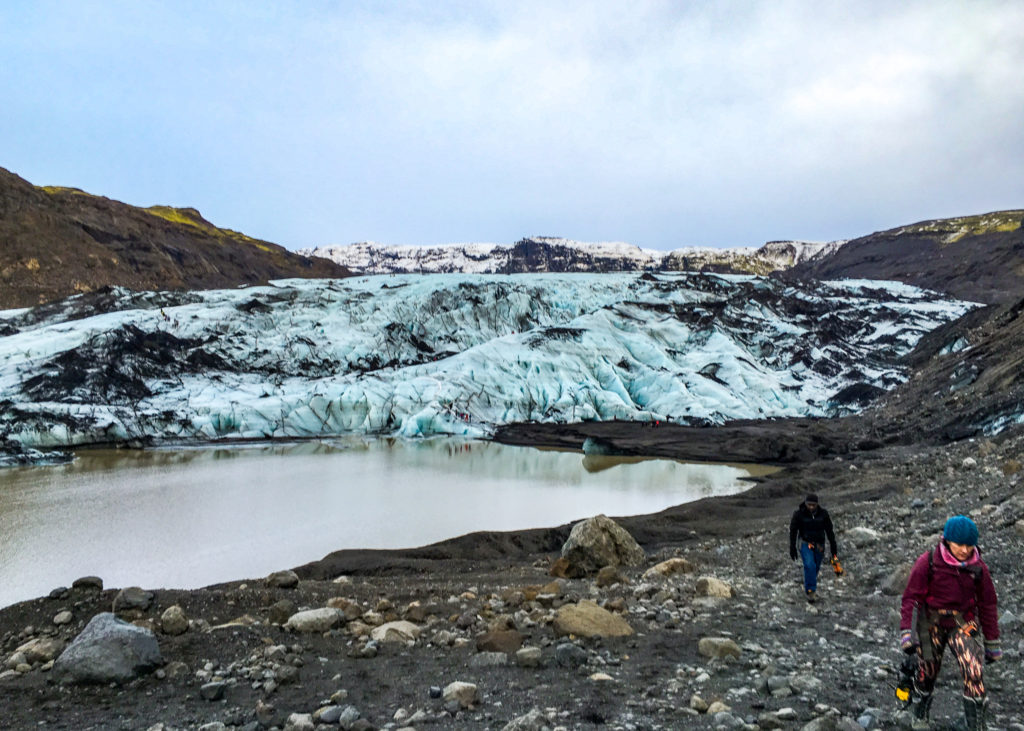
Approaching the mouth of the glacier, starting point of our hike

Suited, booted and ready to go
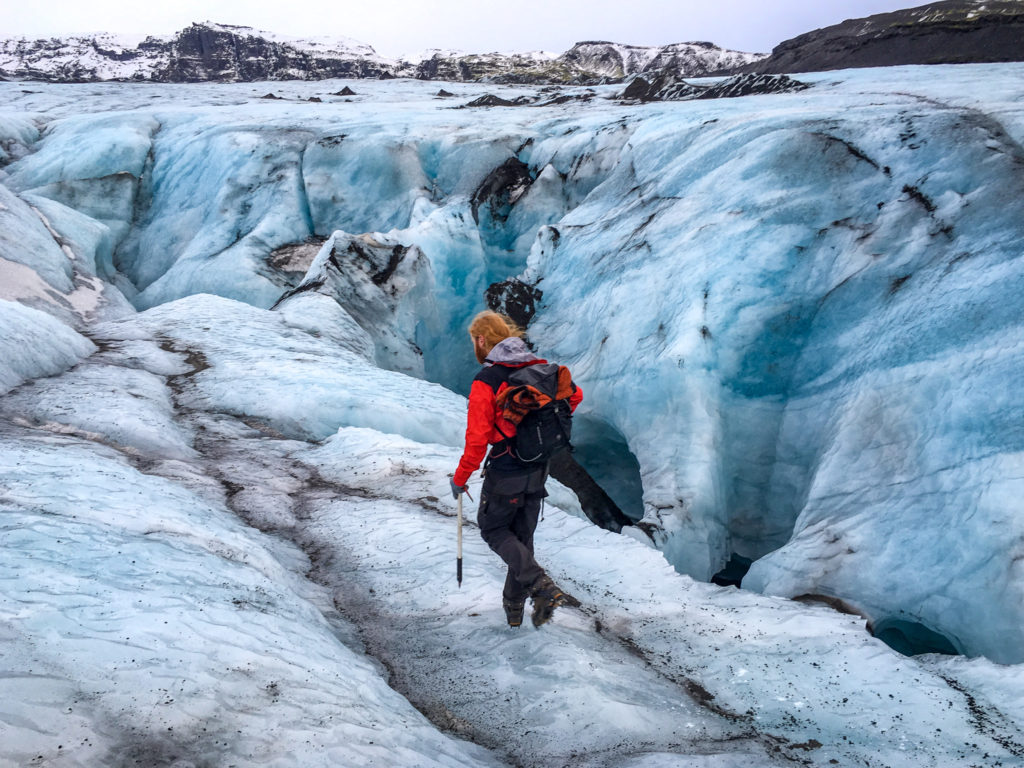
Led by our guide
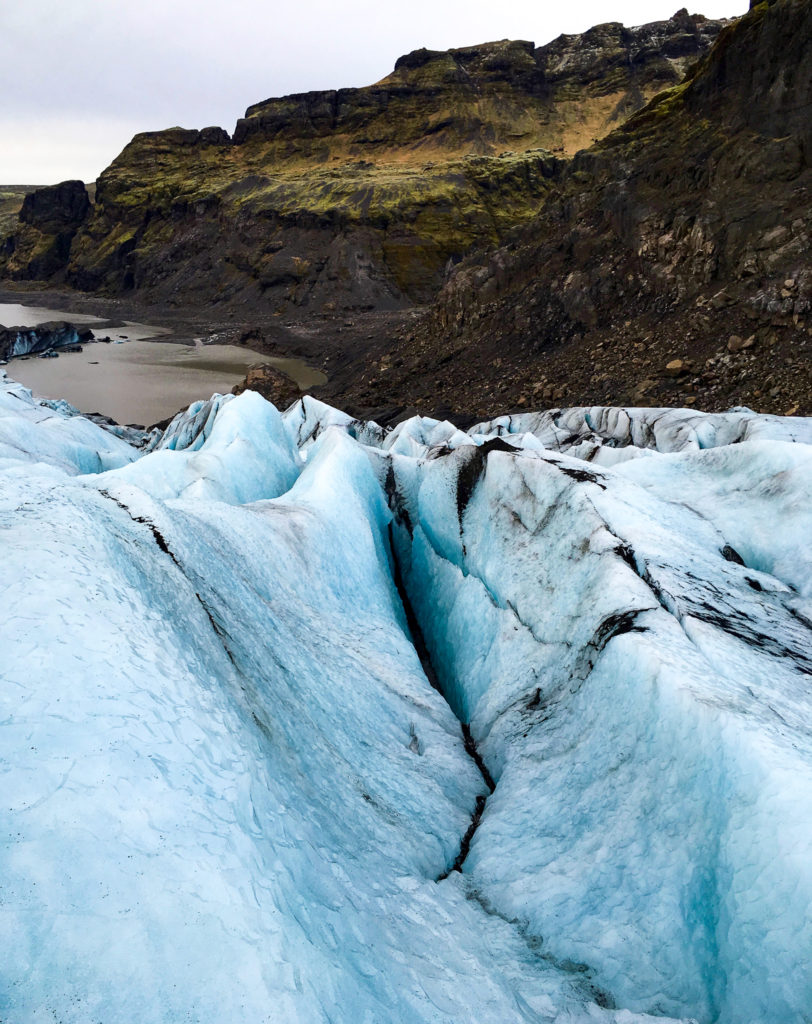
The blues of the glacier ice are mesmerizing
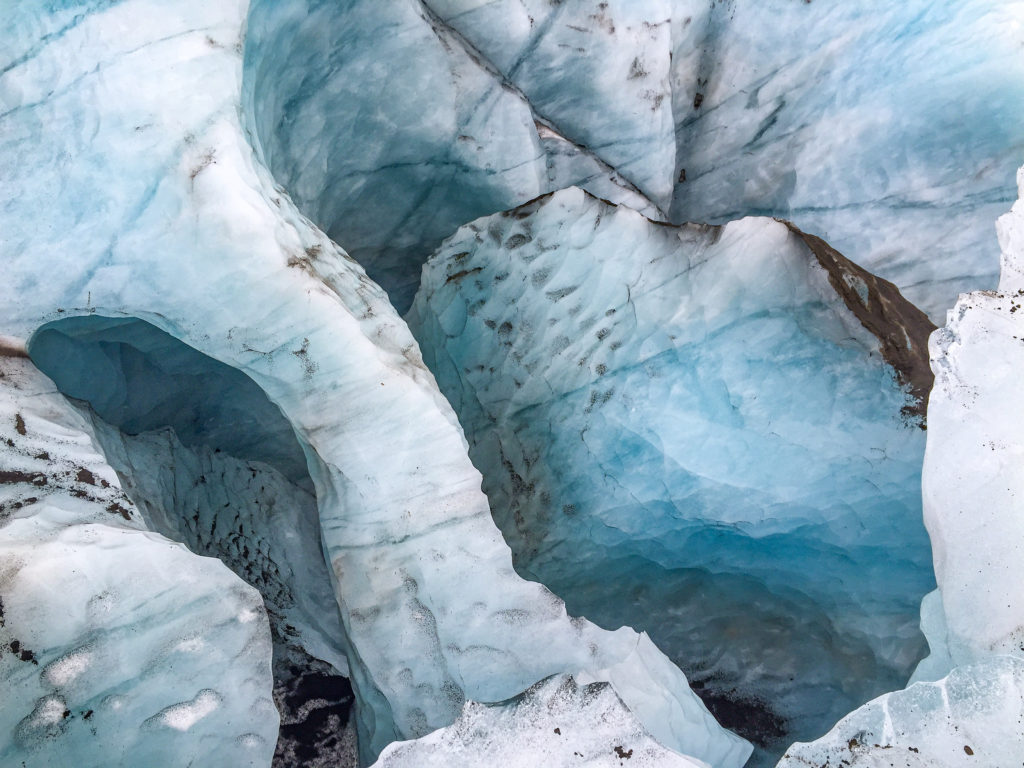
Exploring the intricate crevasses
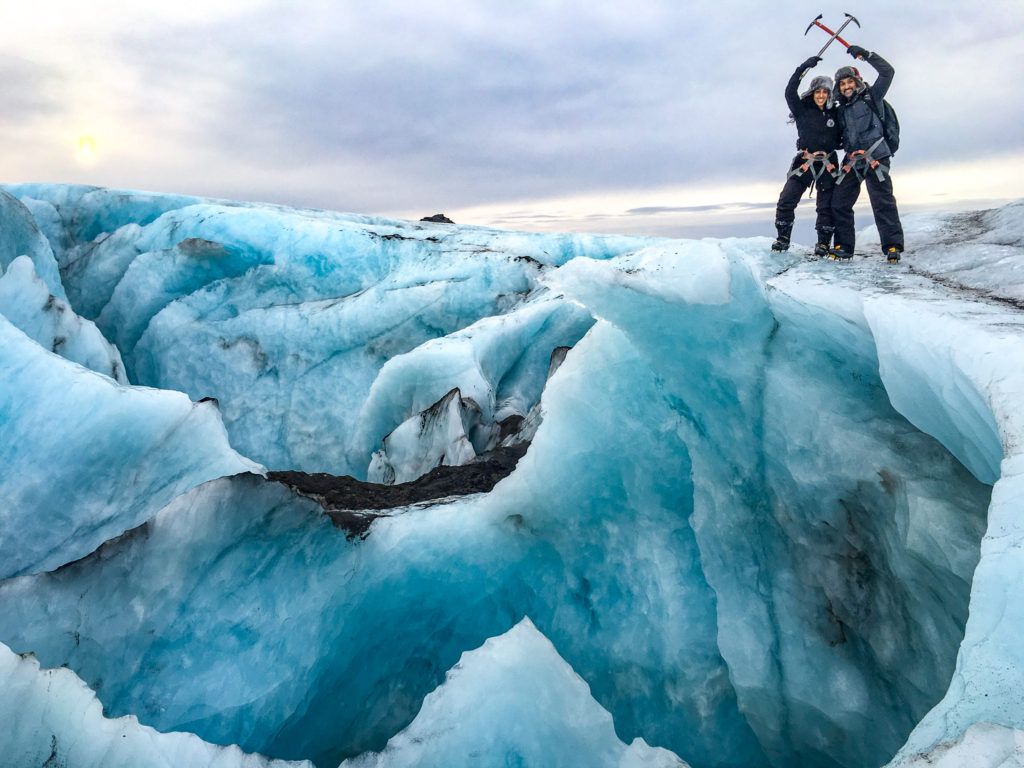
Cheesy pose but worth it!
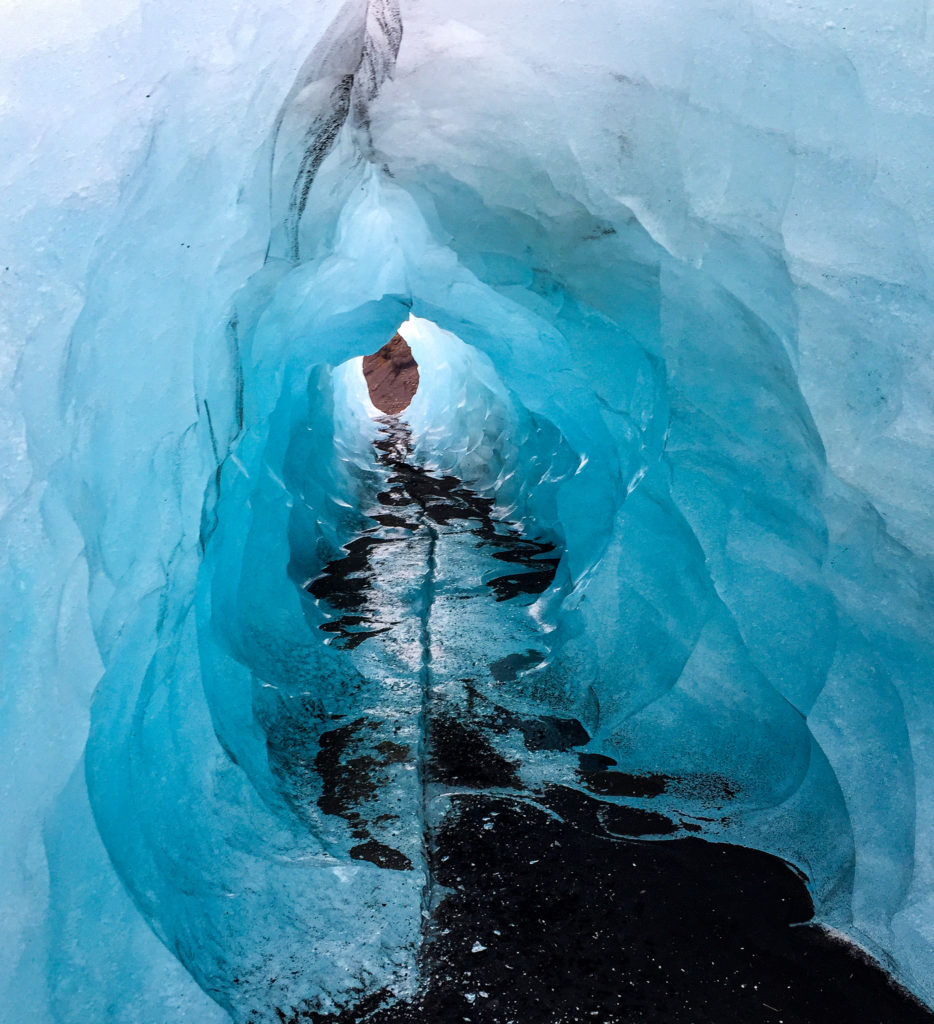
Tunnels carved through by melting ice
Gaudi’s Sagrada Familia, Spain
Antoni Gaudi’s unfinished masterpiece of The Sagrada Familia is Barcelona’s most visited attraction, despite still being under construction since it’s inception in 1882. Sagrada Familia is probably the ultimate expression of Gaudi’s inimitable Gothic and Art Nouveau influenced architectural style, drawing heavily on his inspirations from nature and organic forms. I’ve been to Barcelona twice in the last 10 years, and the construction progress still seemed painstakingly slow each time – maybe since Sagrada Familia relies entirely on private donations for its funding. The ever present construction cranes, scaffolding and construction workers also belie the fact that this is actually a functioning Roman Catholic Church with regular services.
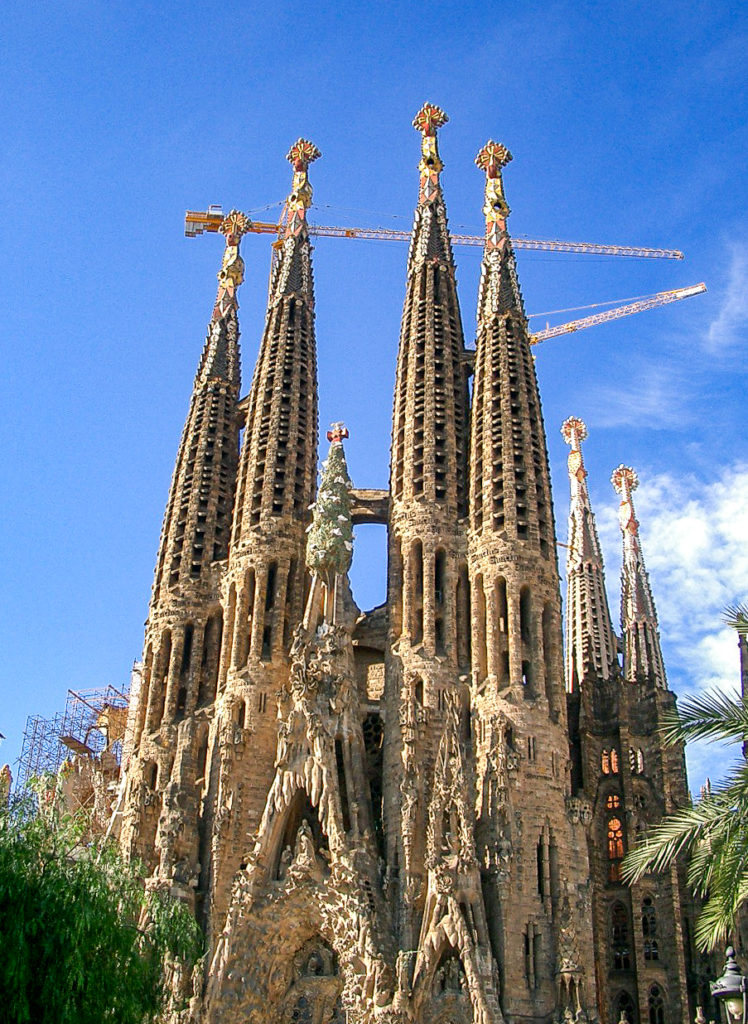
The spires of Sagrada Familia and ever present construction cranes looming over, with a view of the Nativity Facade
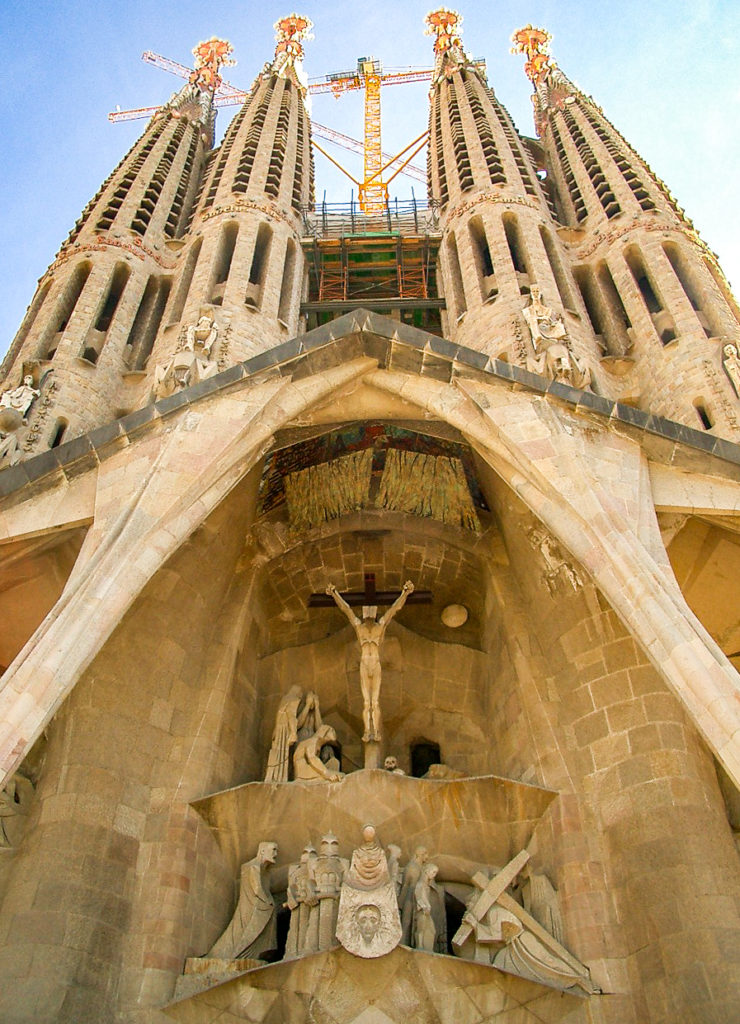
The Passion Facade
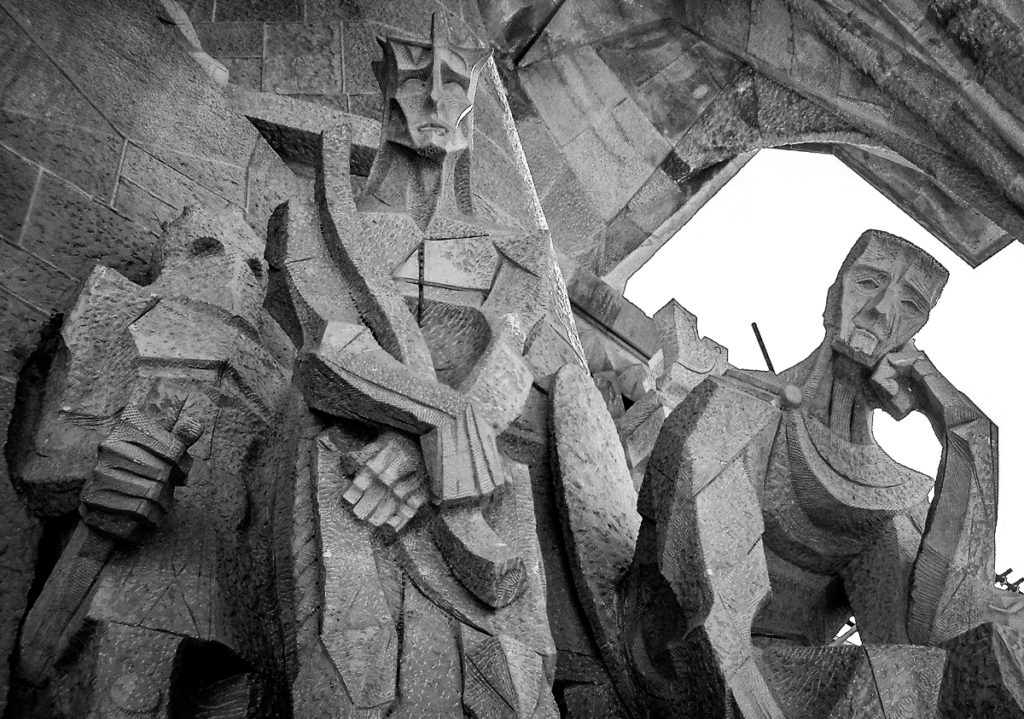
Passion Facade sculptures up close
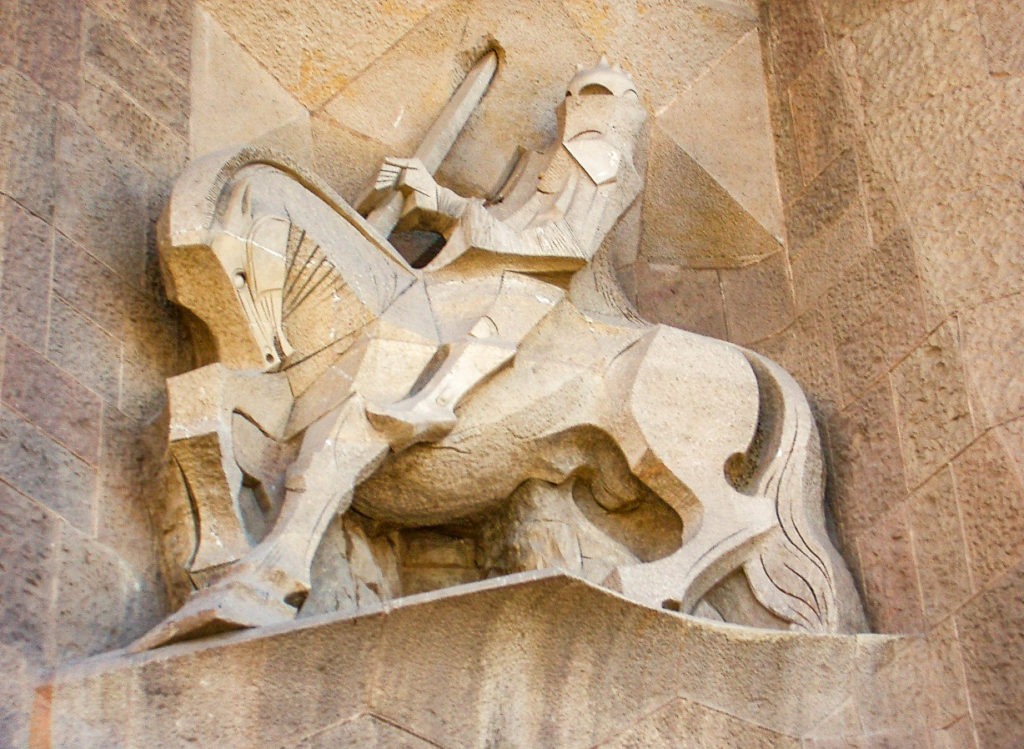
More angular imposing sculptures
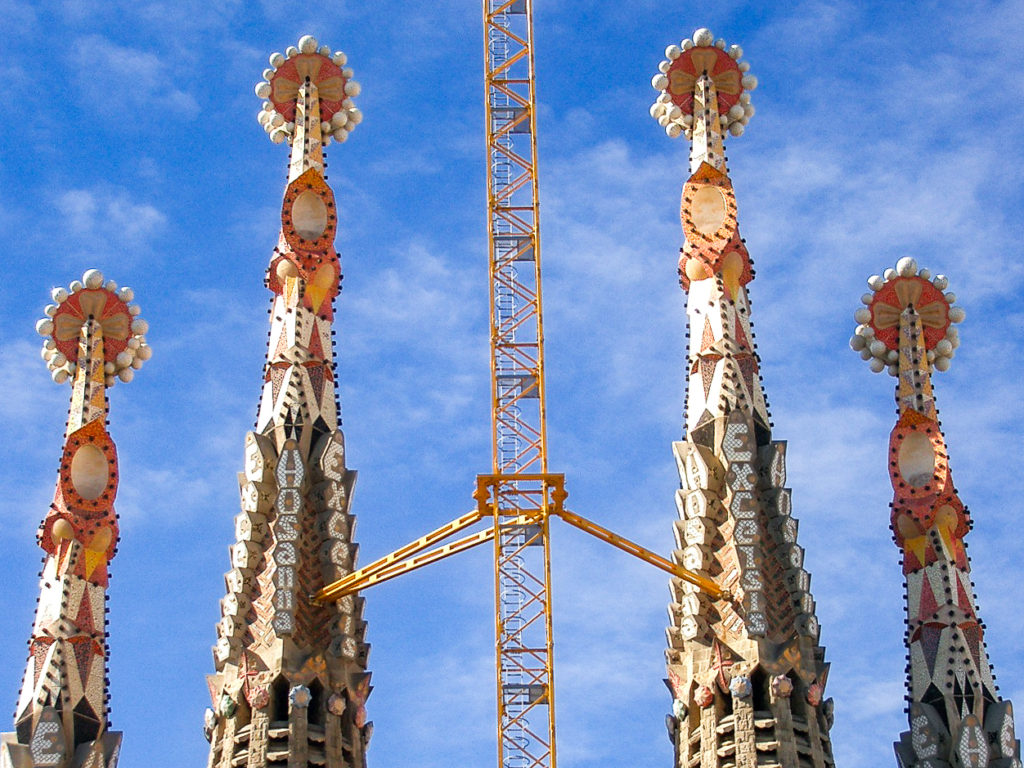
A few of the completed spires
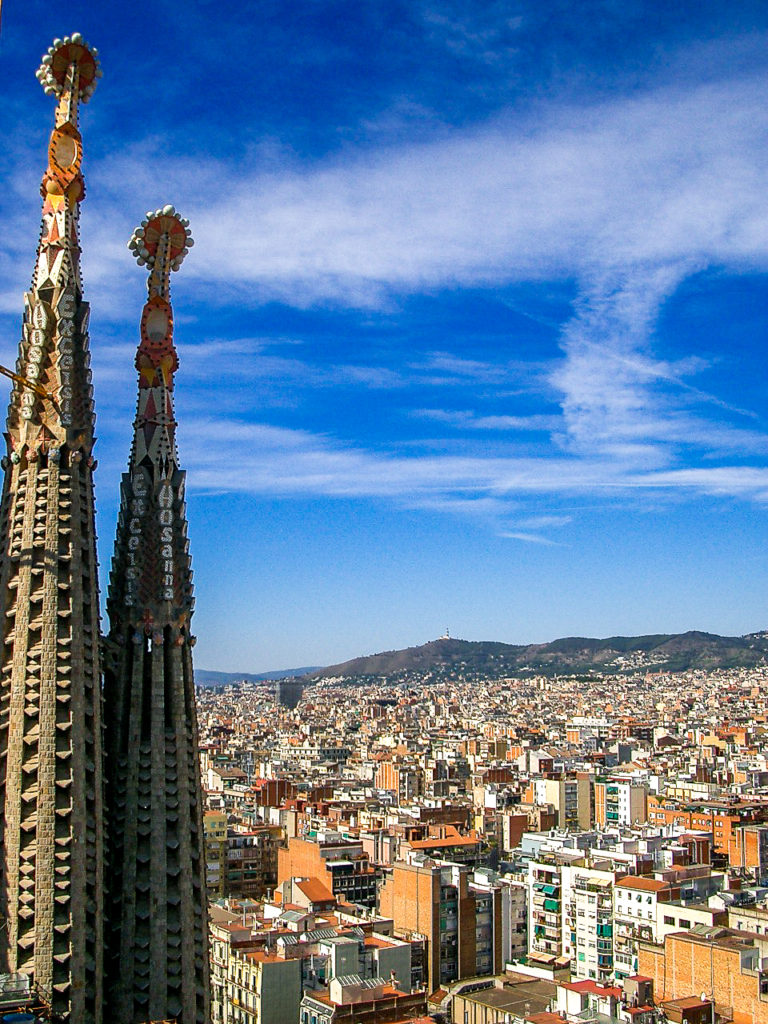
Views of Barcelona from atop one of the towers
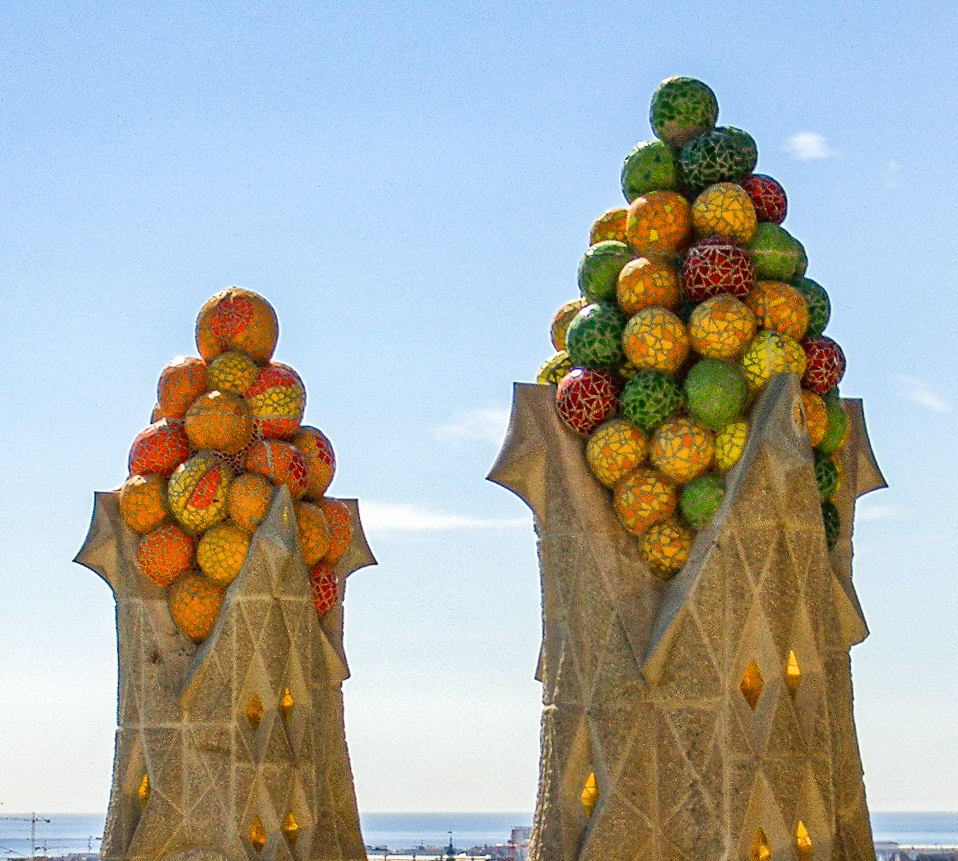
Tower topping or fruit basket?
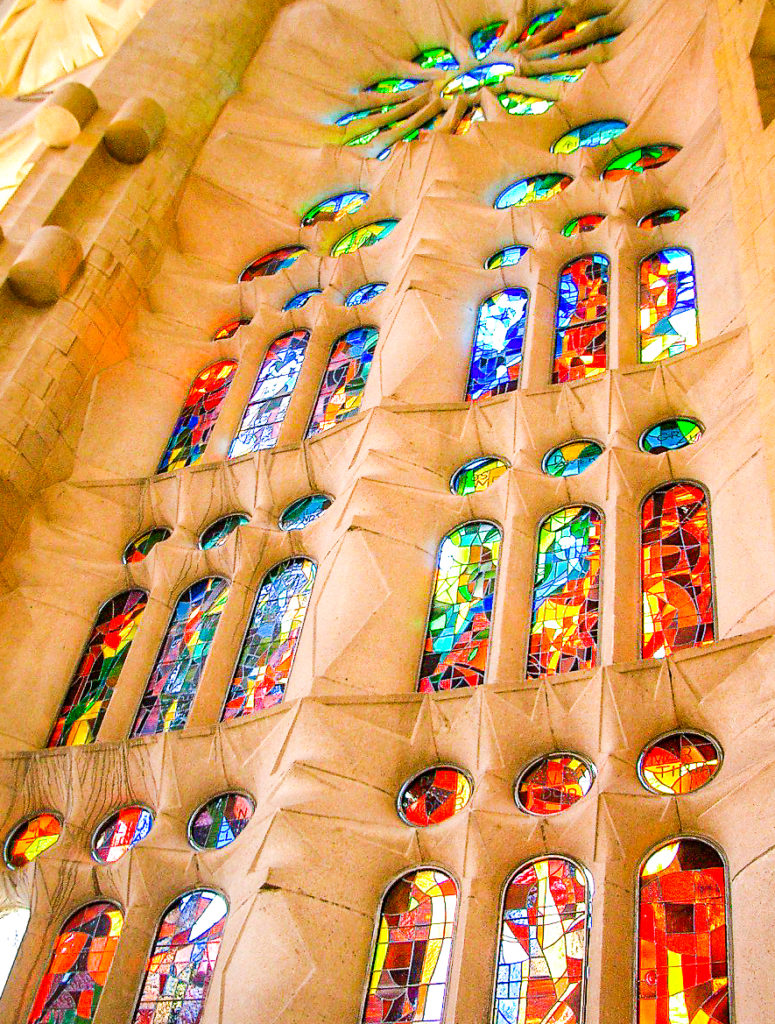
Colorful stained glass windows on the interior
Sunning in Santorini, Greece
Just mentioning the name Santorini quickly conjures up the iconic views of houses with their whitewashed walls, and bright blue church domes, set against sheer cliffs that drop into the deep blue waters of the Aegean Sea. This Greek island was created after a massive volcanic eruption around 1600 BC, and what is left jutting out of the ocean today is the caldera of the sunken underwater volcanic crater. I stayed in the town of Oia, famed for its amazing sunset views. Although a small island, there is so much that Santorini has to offer – ancient Roman & Byzantine ruins, red & black volcanic sand beaches, and still functioning wineries.
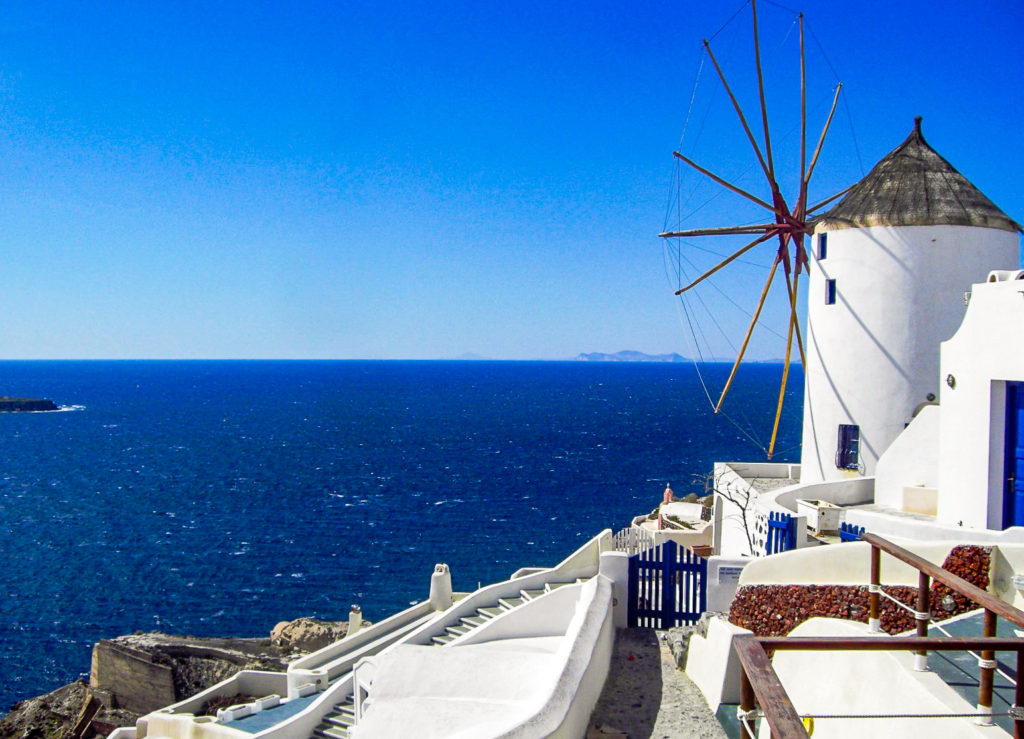
One of the iconic views of Santorini’s windmills
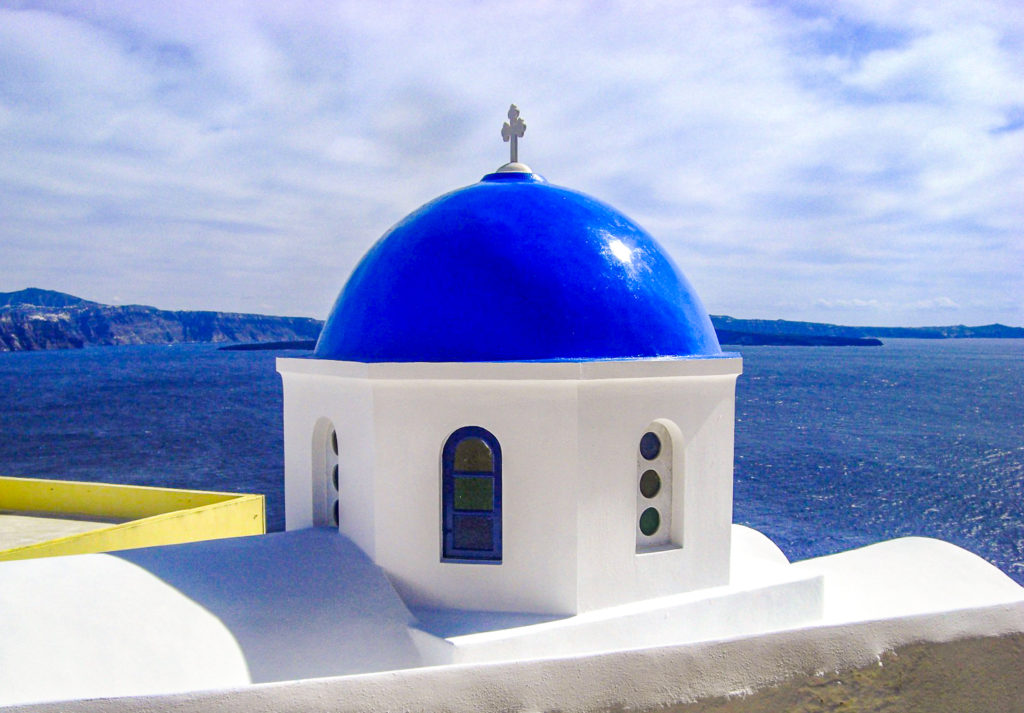
Blue domed churches
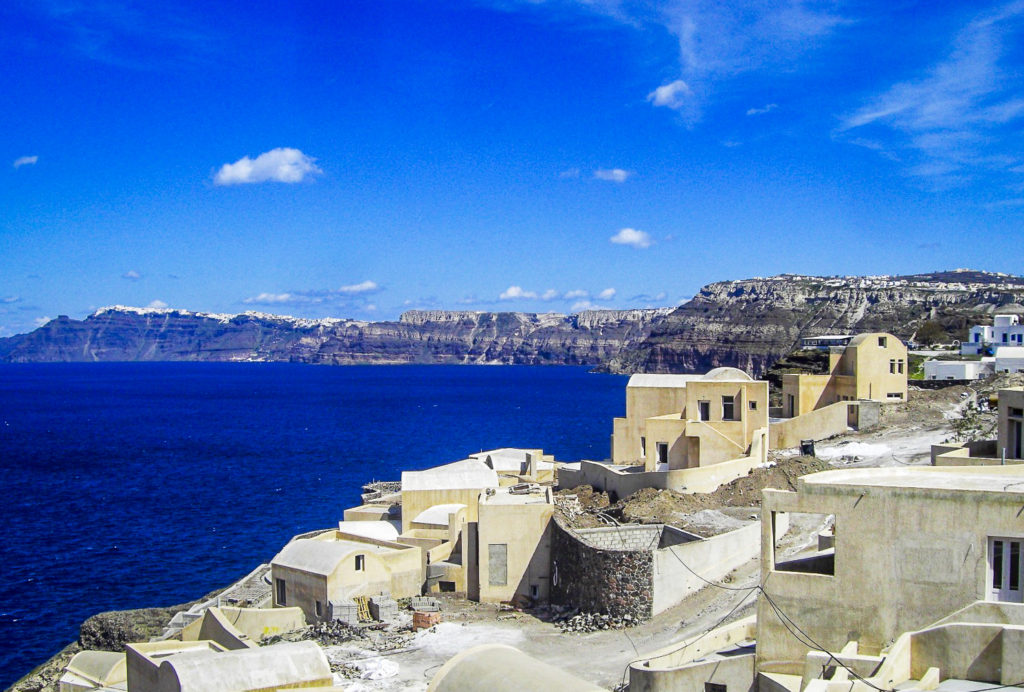
Unreal blue hues of the Aegean sea
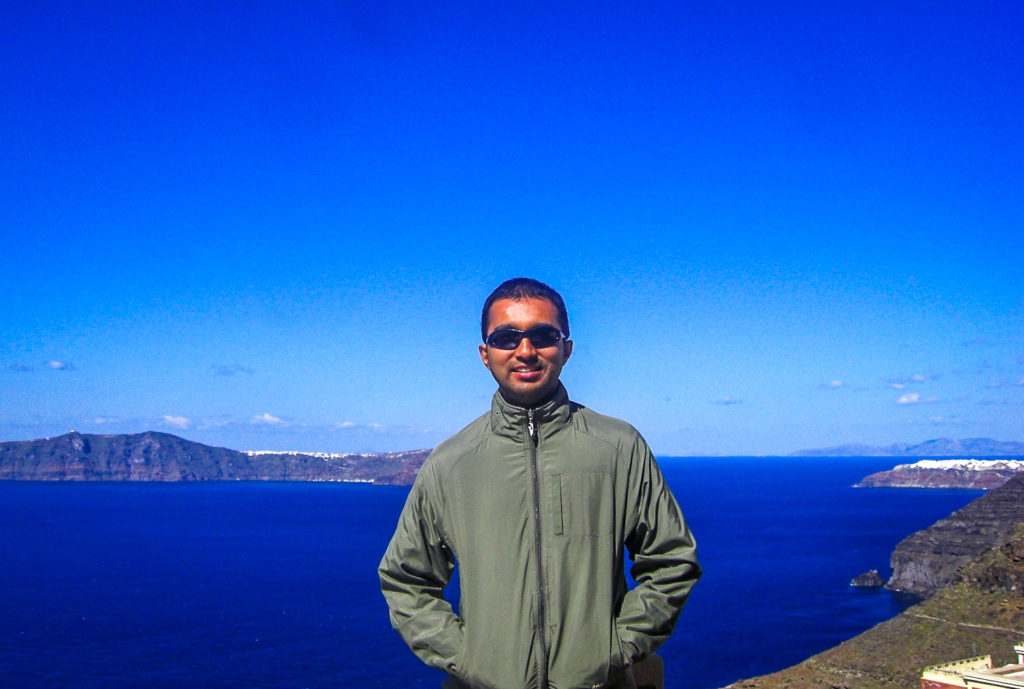
Perched cliffside
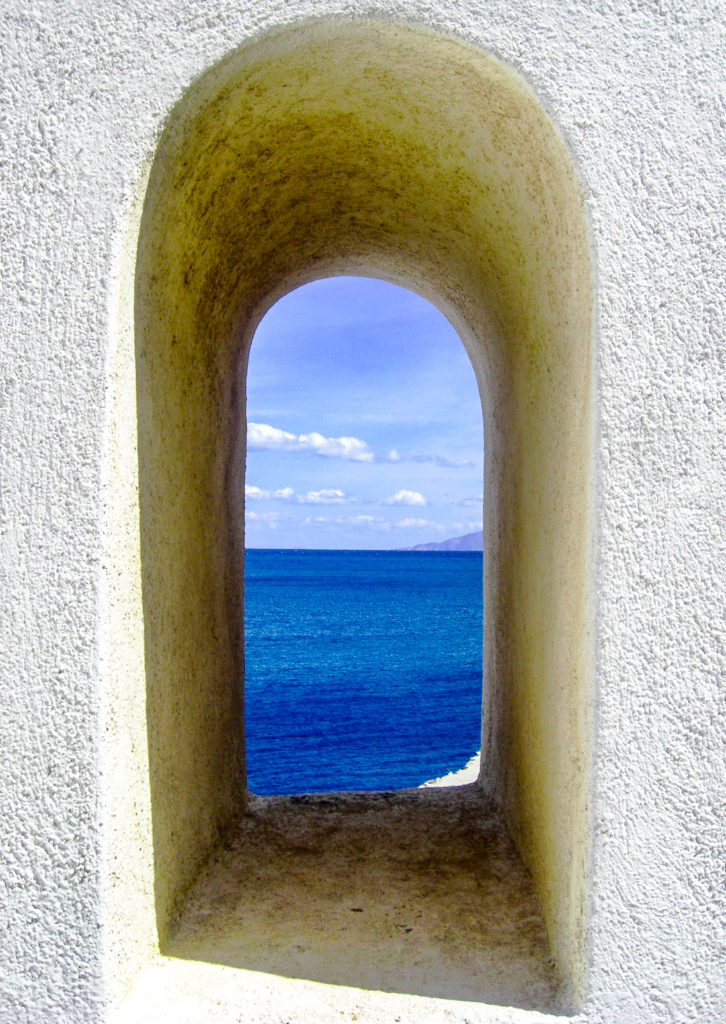
White and blue contrasts everywhere
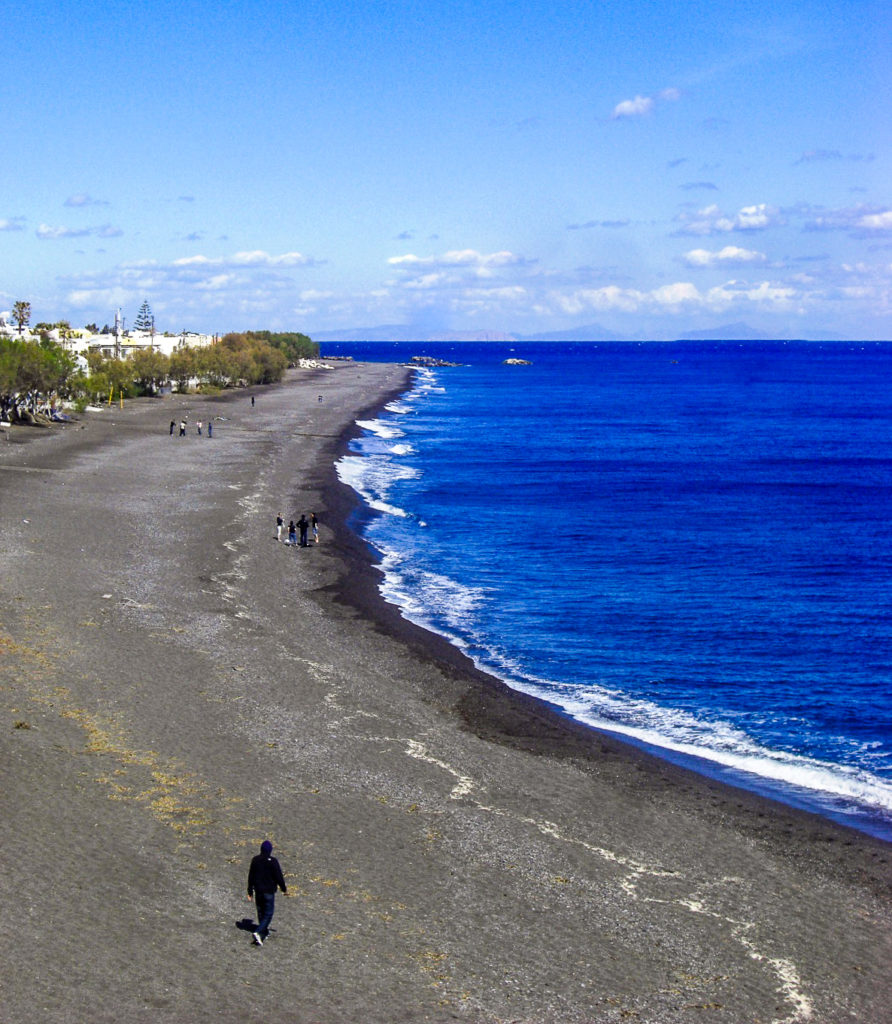
Black sand beach
Rome’s Mighty Colosseum, Italy
The Colosseum in Rome is one of the most famous Roman monuments to stand the tests of time over almost 2000 years. It is one of the New 7 Wonders of the World and Rome’s most famous landmark that is hard to miss in the eternal city. This freestanding architectural marvel of stone was completed in 80 AD under Emperor Titus after it was started by his father Emperor Vespasian. With seating for more that 50,000 spectators the Colosseum was the largest amphitheater ever constructed. Over the centuries of Roman rule it was the scene for gladiator contests, public executions, and all kinds of other “entertainment” spectacles for the bloodthirsty masses.
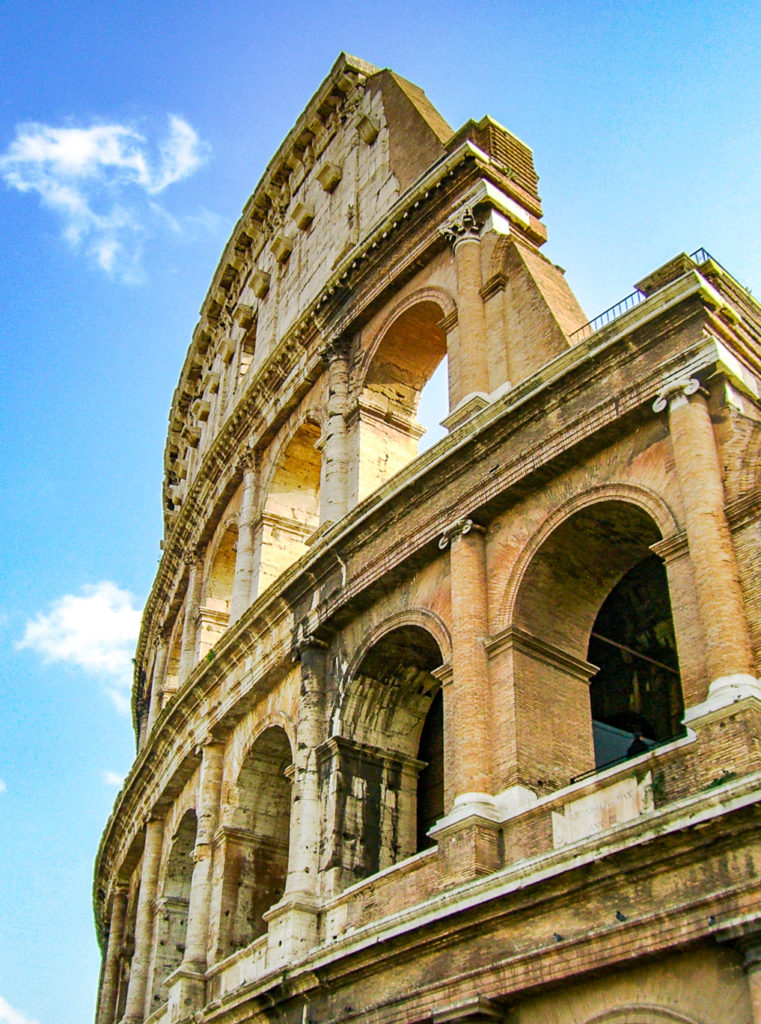
Still standing mighty walls of the Colosseum
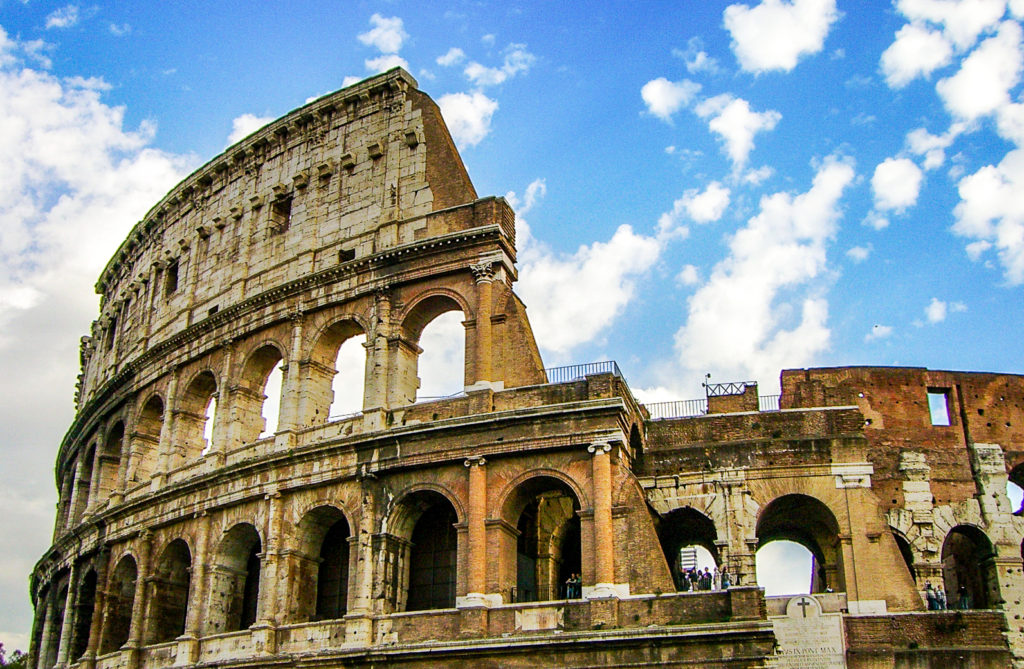
An instantly recognizable facade
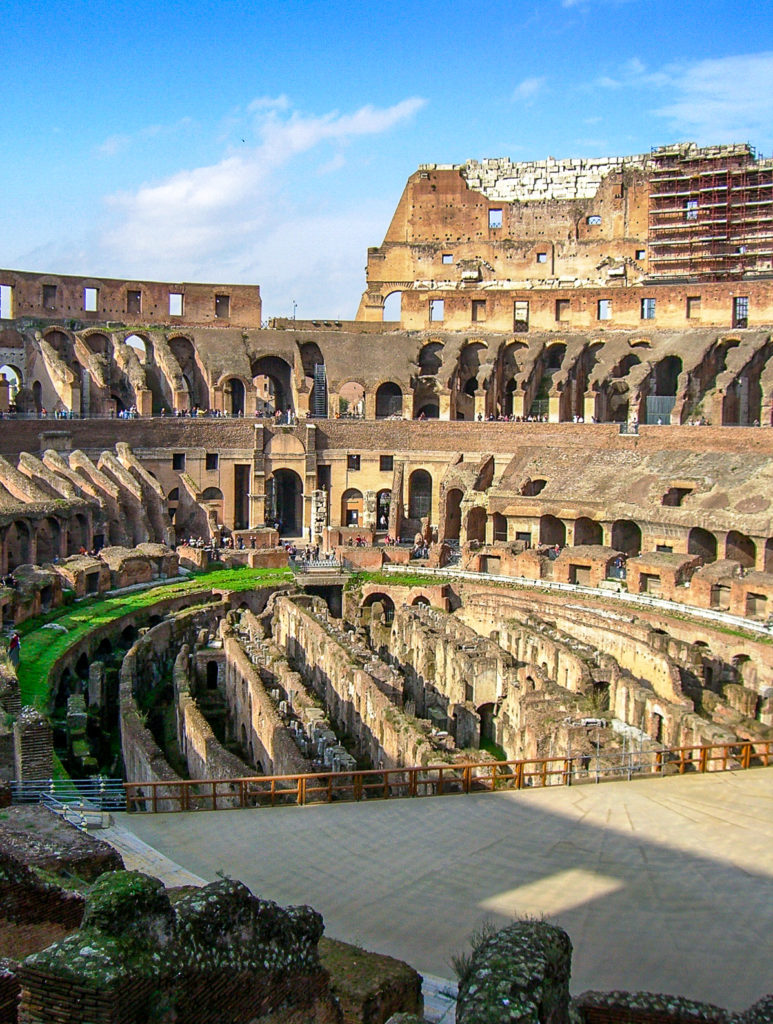
View of the Colosseum from the inside, with a preview of what the underground channels that used to be buried under the arena look like
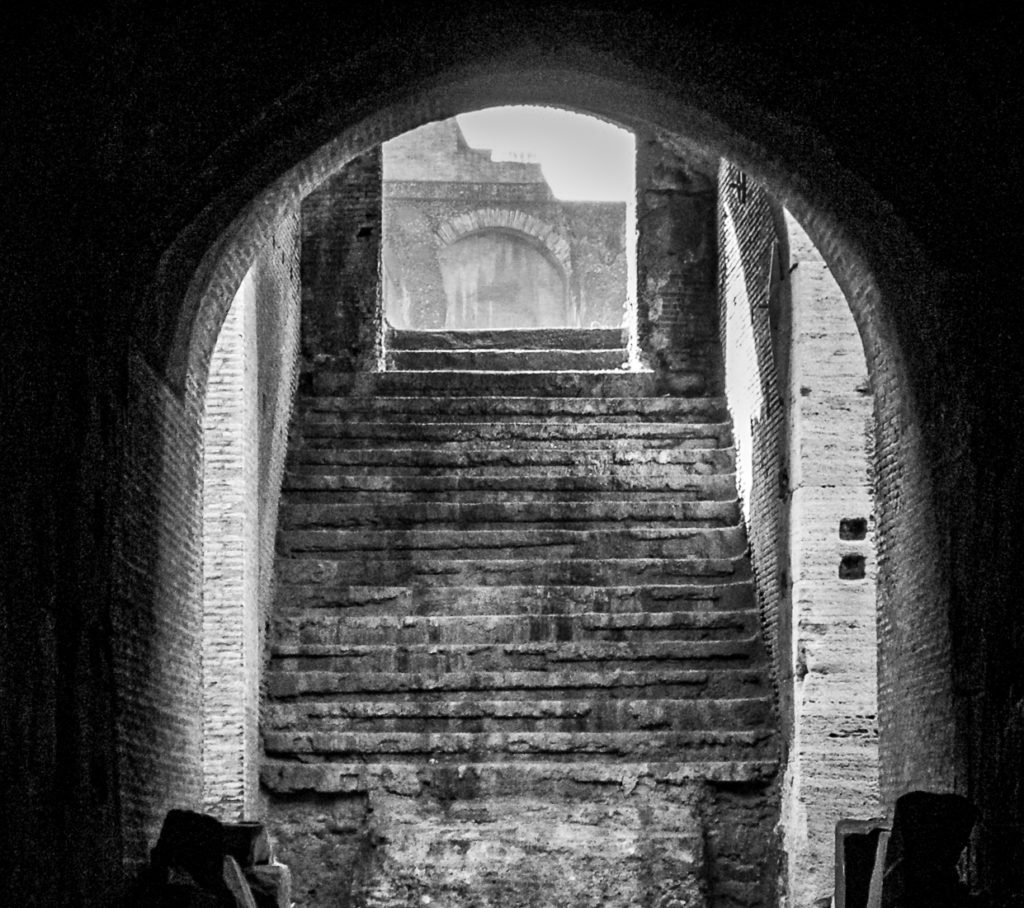
These steps from the chambers below saw many a gladiator and slave climb up to their eventually gory end in the arena
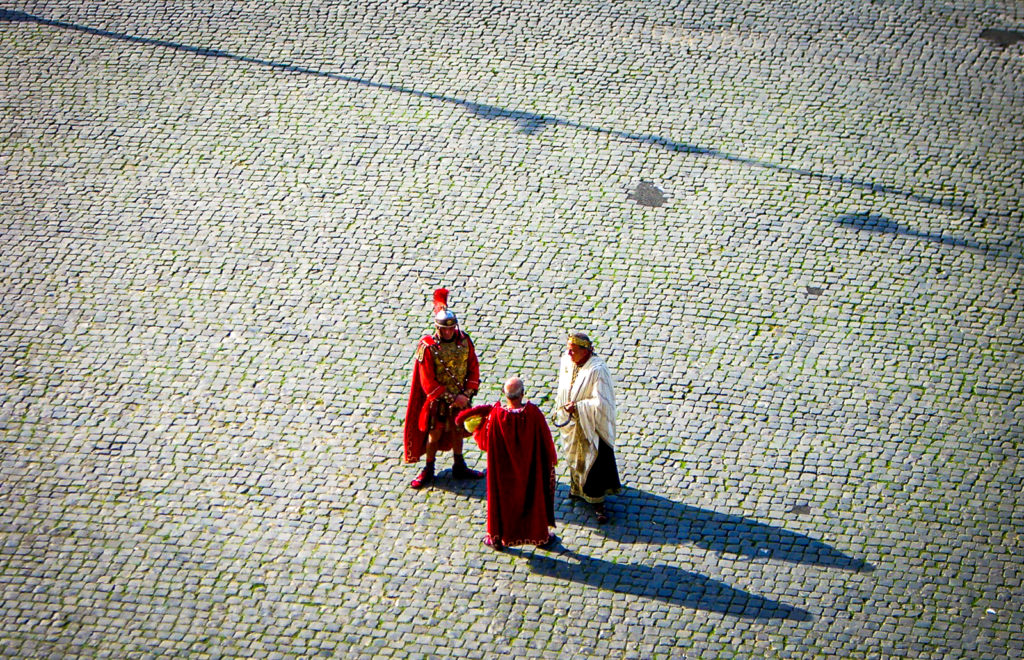
Romans in full costume debating how to fleece the next horde of tourists outside the COlosseum
The Atomium, Belgium
The Atomium is a unique/quirky structure on the outskirts of Brussels, well worth a visit when you need a break from stuffing yourself with all those Lambic beers, Pommes Frites and Belgian Chocolate. Built during the World Expo of 1958, this spherically replete attraction is meant to represent the 9 atoms of an Iron crystal, magnified 165 billions times the original crystal dimensions. The interconnected stainless steel clad spheres were the brainchild of engineer Andre Waterkeyn and he listed the architect Polak brothers to build it. The Atomium in all its shining glory is definitely an eye catching attraction and warrants some up close and personal inspection.
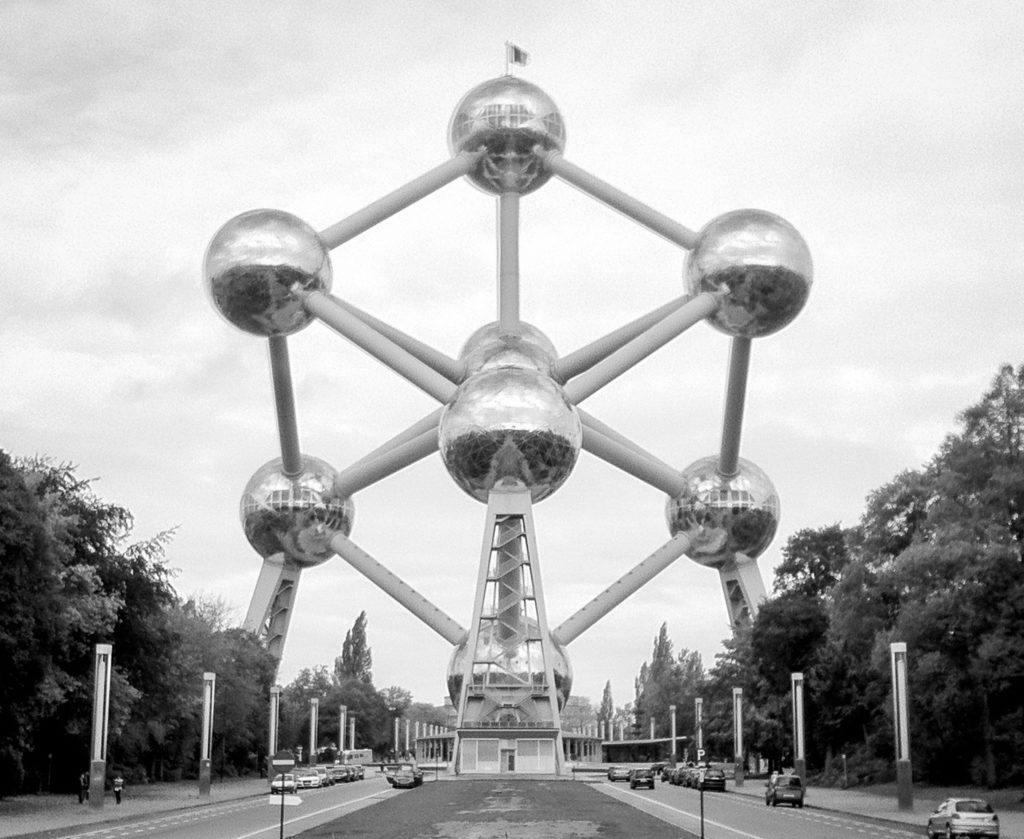
The Atomium
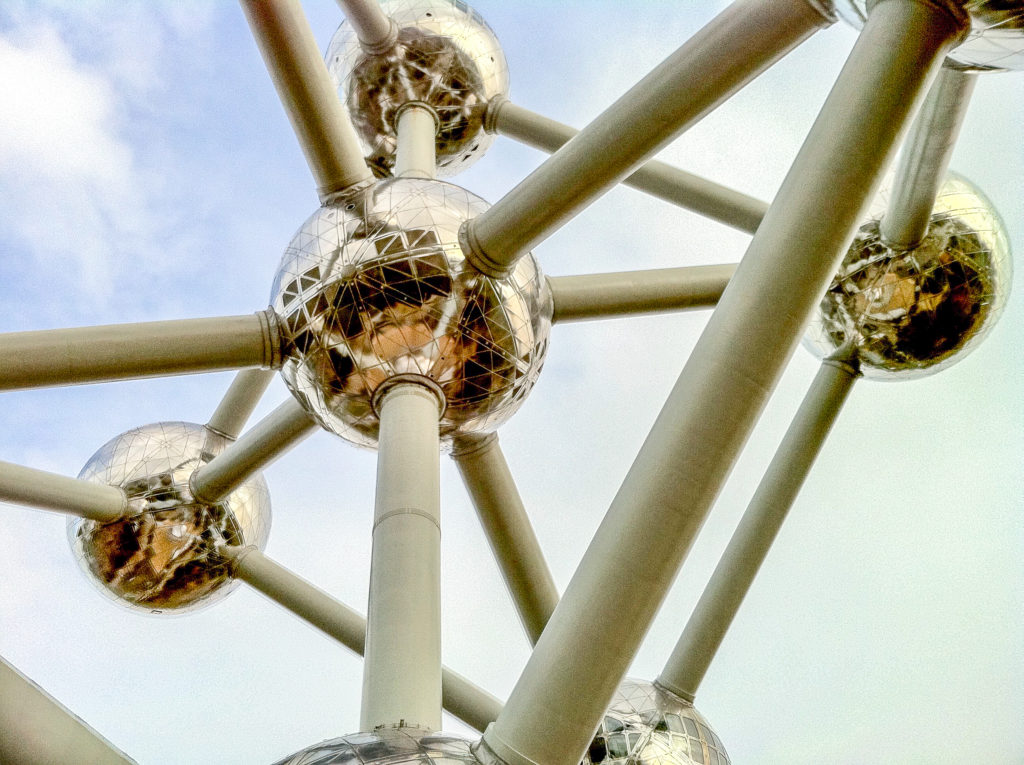
Close up view
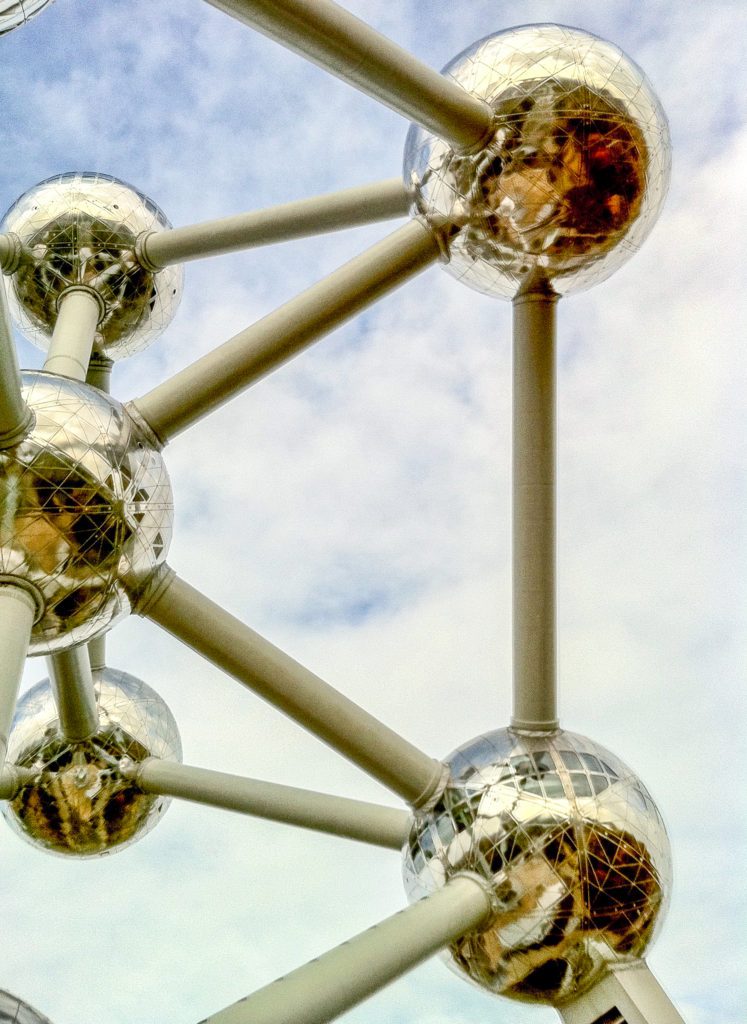
Beauty in symmetry
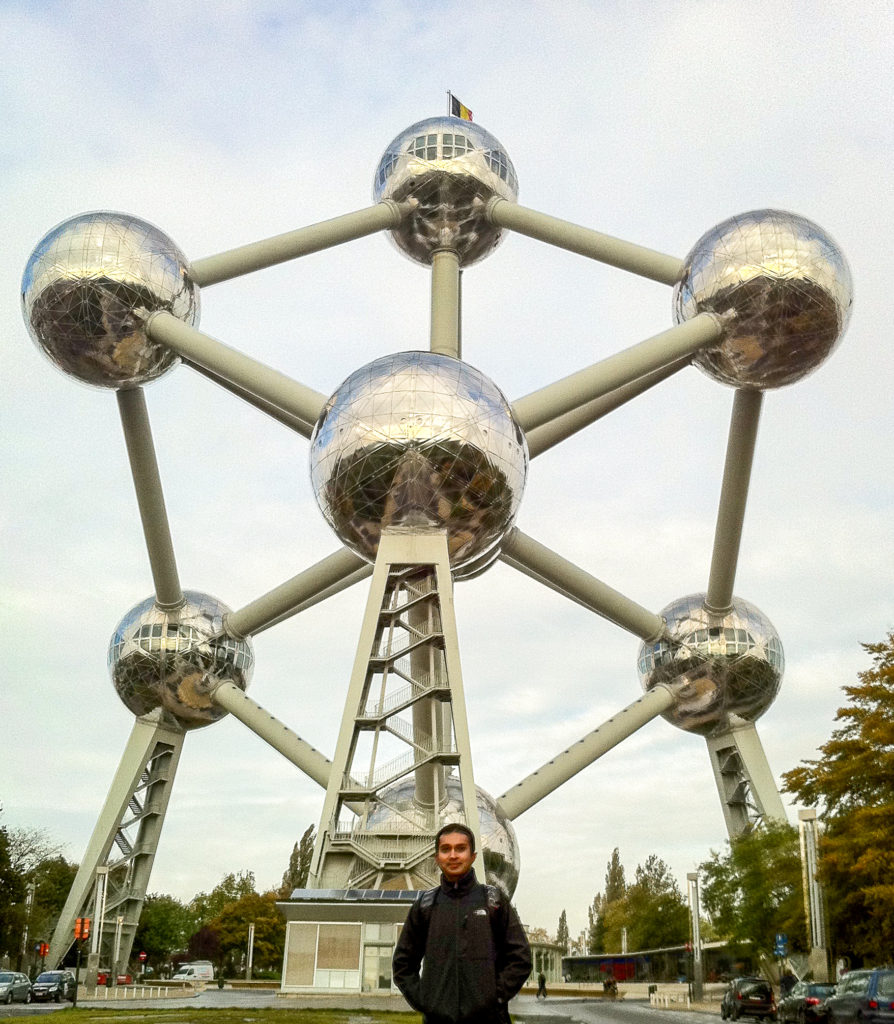
Scale comparison against those massive orbs
Taking in the splendor of Hagia Sophia, Turkey
The Hagia Sophia is one of the most captivating structures in Istanbul, if not all of Europe. Once the largest cathedral in the world when it was built by Byzantine Emperor Justinian in ~500 AD, Hagia Sophia was subsequently converted into an Islamic mosque by the conquering Ottomans in 1453 AD. Kemal Atarurk converted the structure into a secular museum in 1935, opening it up to people of all faiths and allowing Hagia Sophia to become the most visited tourist site in Istanbul. Fortunately this also allowed for massive restoration work within, which has helped uncover some of the ancient Christian frescoes and gilded decorations that were either plastered over or covered while the mosque was operational. The massive dome and surrounding minarets give the structure its distinctive silhouette, but the main treasures are saved for the inside. The juxtaposition of walls adorned with grand Byzantine Christian mosaics against massive discs decorated with Islamic calligraphy is unlike any decorations I’ve seen in a place of worship before.
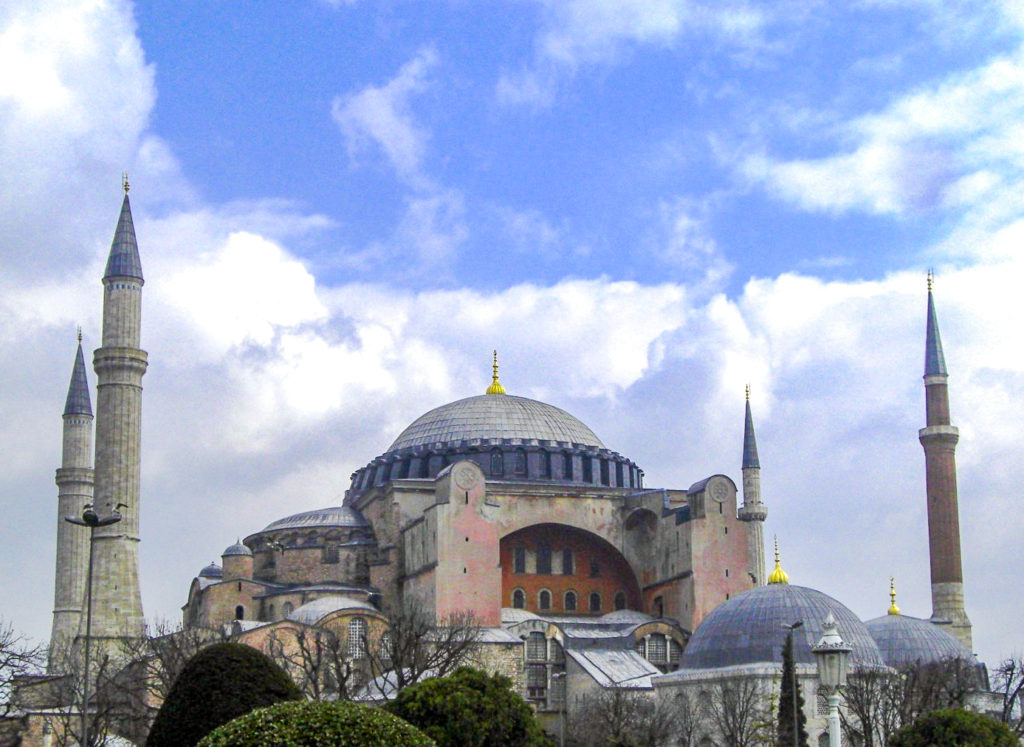
Iconic silhouette of Hagia Sophia
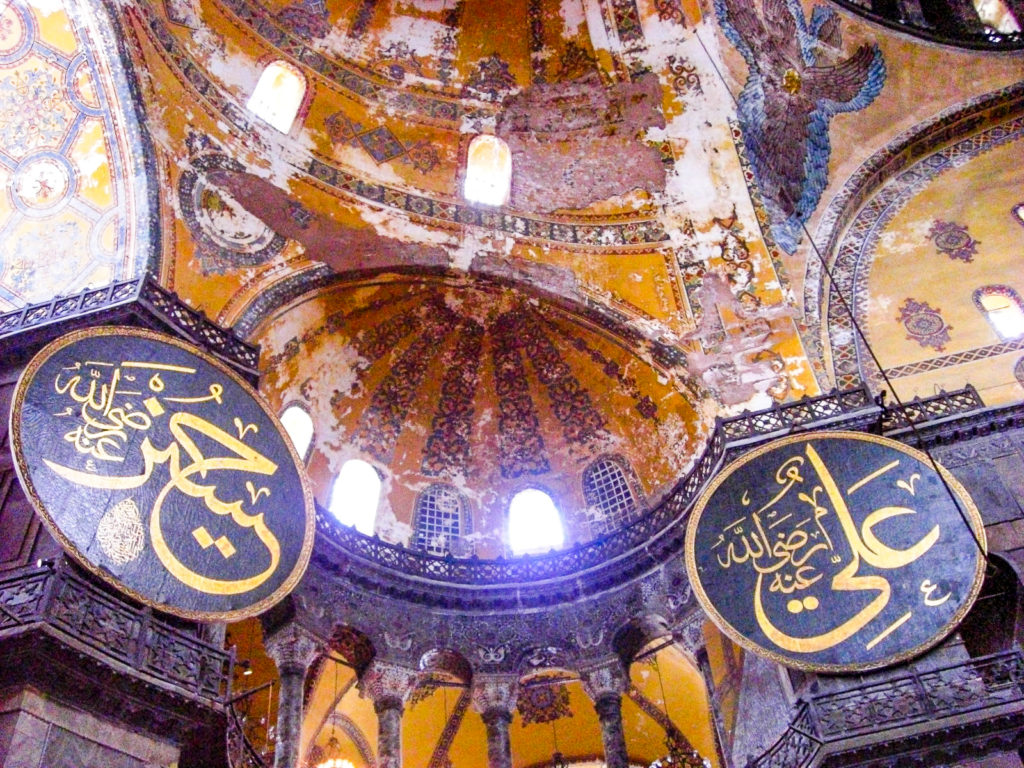
Looking up towards the massive dome, with Islamic calligraphy inscriptions competing against Christian frescoes
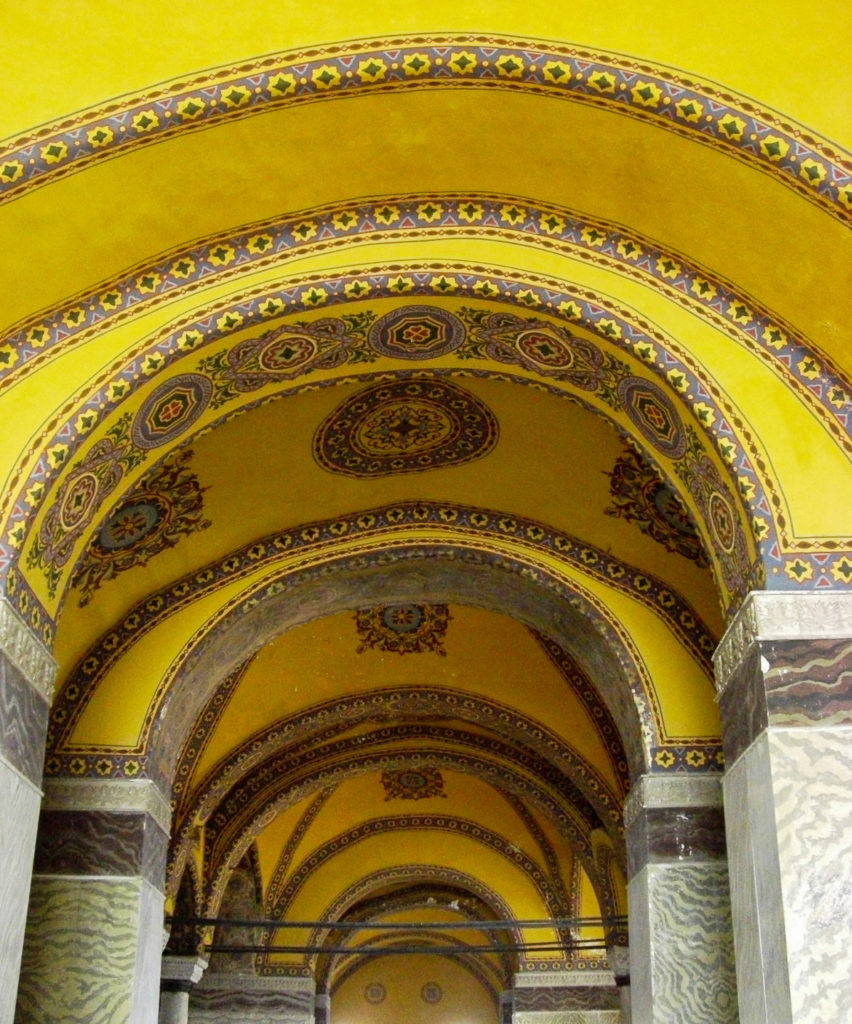
Intricately decorated curved archways
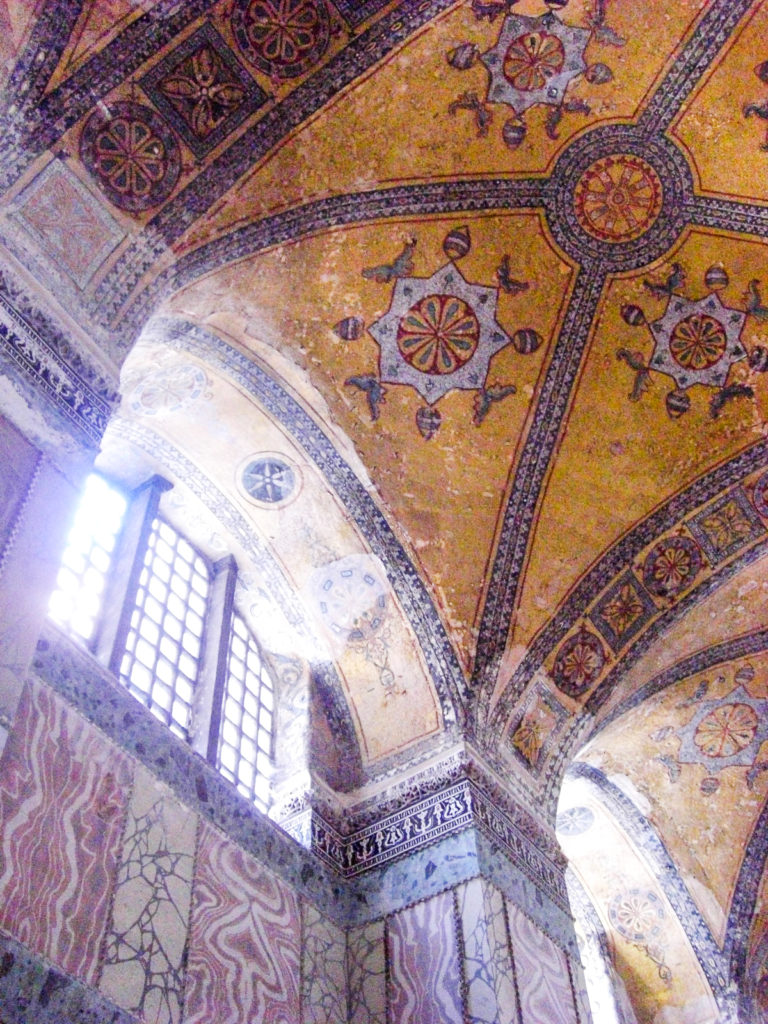
Rich tapestry of decorations on every surface
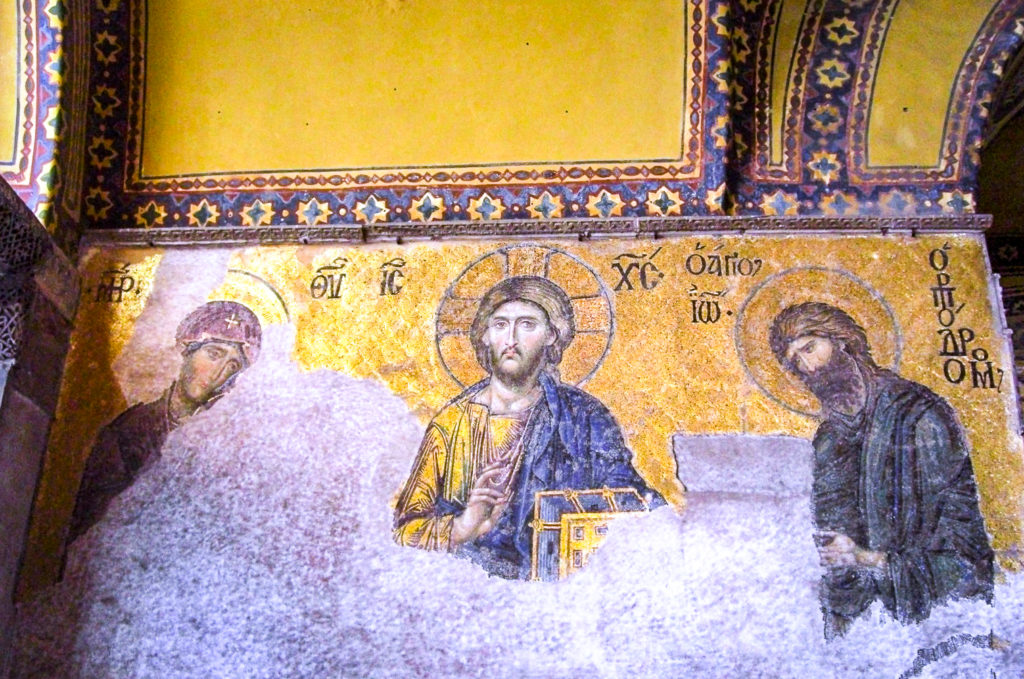
Famous partially surviving fresco of Christ with Mary and John the Baptist
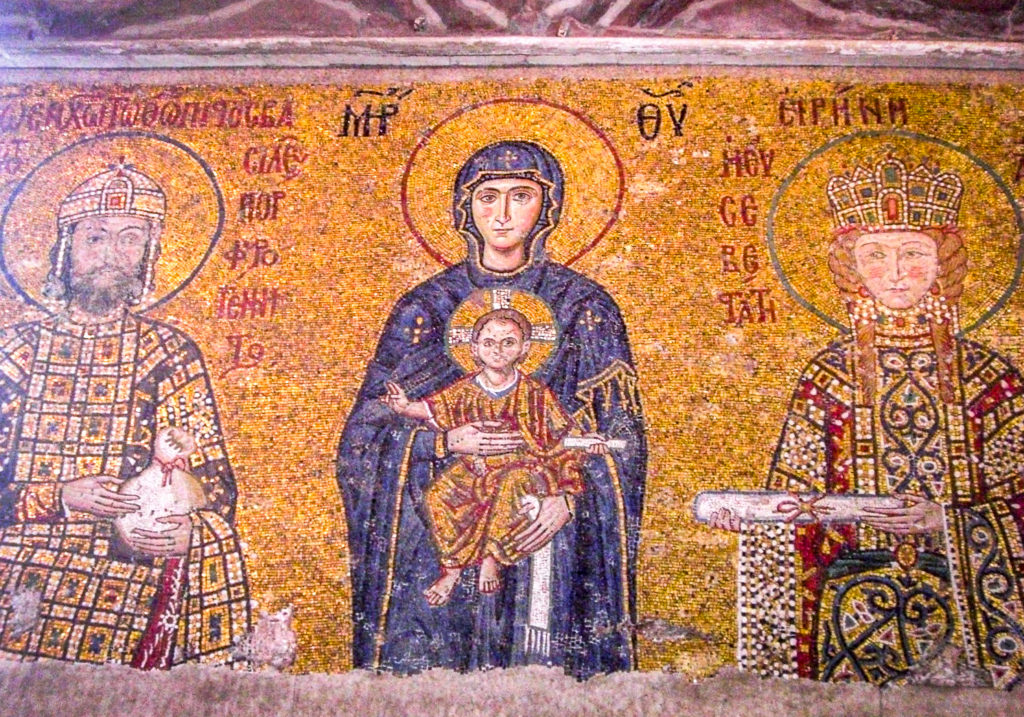
Madonna with Child

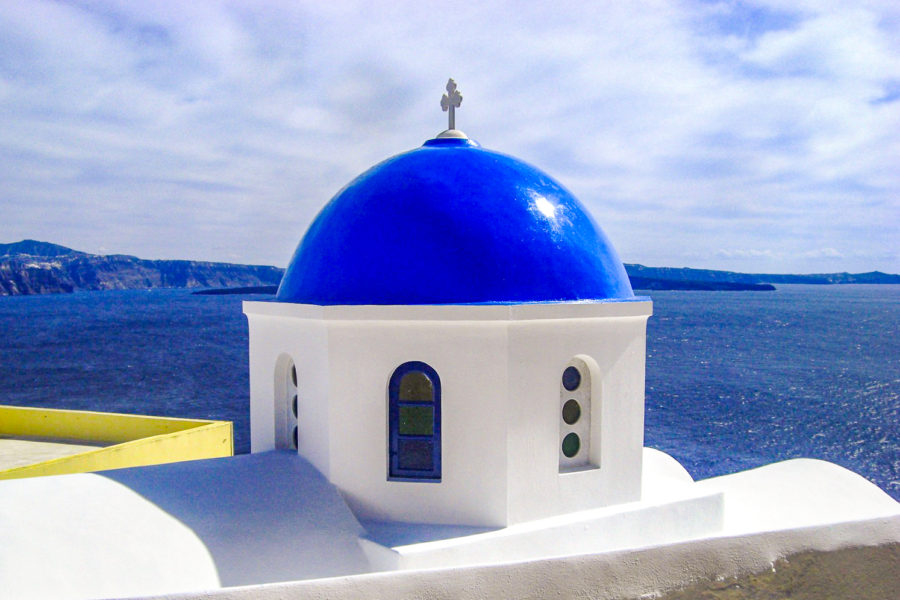
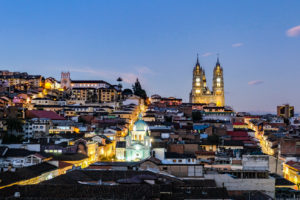
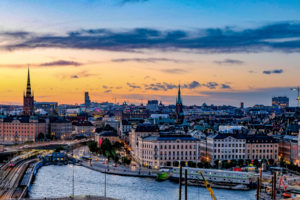
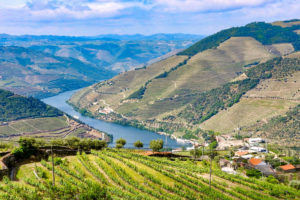




Leave a Reply
Please share your comments below!